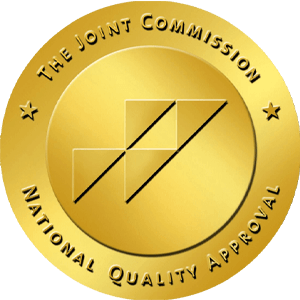Kratom is a plant in the coffee family with opioid-like properties and some stimulant properties. It grows predominantly in Southeast Asia and has been used in the region as traditional medicine and herbal remedy for years. Kratom’s usefulness and safety are still unknown since there has not been much quality research done yet. Many people classify kratom in the category of opioid alternatives, but more research needs to be done on its safety. Some even look to the drug as a natural alternative to the opioid crisis.
Traditional Uses of Kratom
Throughout history, kratom has long been acknowledged as a form of traditional medicine in many regions throughout Southeast Asia. The leaves of the plant are usually chewed to relieve muscle pain, boost energy, increase appetite, and even as an aphrodisiac. The drug also has a medical application and can be used to cure pain and provide treatment for physical injuries. The drug is used extensively by doctors in Thailand to cure many ailments.
Modern Uses of Kratom
Kratom taken in small amounts has a mild soothing stimulant effect but taken in larger doses, it can have euphoric effects and pain-relief effects similar to opiates. This has led to kratom becoming a popular recreational drug with many claiming that the drug can calm the user, cure depression, and even have a use in drug rehab clinics. The thought is that it can be used as a substitute similar to methadone and become another one of these opioid alternatives. Time will tell if mass adoption of kratom in the United States will take place or not, but more clinical trials will be conducted to determine if there are any underlying long-term effects of the drug.
Application in Drug Rehab Clinics
Many look to the application of kratom to aid people who are going through drug rehab. This is due to the drug having effects that are similar to morphine and containing similar qualities of other opioid alternatives. Kratom has been proven to help with the negative effects of withdrawal, but repeated use may actually lead to addiction. As of now, kratom is legal at the federal level in the United States, although it is banned in some states. Some even suggest that kratom can be used as a safer alternative to conventional opiates and could help curtail the opioid crisis.
Dangers of Using Kratom

Because the drug is often abused as a recreational drug, there are a number of adverse effects reported and even potential dangers posed to users. The side effects of taking kratom include excessive sweating, loss of appetite, hypertension (high blood pressure), and in extreme cases, even seizures.
There have also been deaths reported that seem to be somehow linked to kratom usage, however, it could not be determined that kratom was the actual cause of death due to other drugs being present in the toxicology report. There are reports that even suggest that the use of kratom has been directly linked to the triggering of psychosis. The CDC (Centers for Disease Control) namely the Poison Control Center say calls regarding overconsumption of kratom have spiked recently, and may soon become a serious threat, especially among young people.
Toxicology Details
At low doses, there are mostly only stimulant effects. Typical side effects include narrowing blood vessels and raised blood pressure. Both of these can lead to flushing of the face and smaller pupil size. Adverse effects at this level include anxiety, paranoia, and agitation. There have also been notably some opioid-related effects such as itching, nausea, and loss of appetite.
At moderate doses, the opioid effects generally begin to show. Negative side effects include excessive sweating, heart palpitations, confusion, and low blood pressure all of which can be dangerous.
Continued use of kratom at high doses could cause serious side effects such as tremors, anorexia, sudden weight loss, seizures, and even psychosis. Additionally, frequent high dose users who attempt to quit using kratom could also have symptoms similar to opioids withdrawal. The symptoms include anger, agitation, raised blood pressure, loss of appetite, and insomnia.
Respiratory Depression
Respiratory depression is one of the biggest threats to opioid users. Also known as “hypoventilation”, it basically means that the body is unable to process the involuntary air exchange which is usually automatic (involuntary). So this may lead to bigger problems like a stroke or aneurysm if the blood vessels don’t receive oxygen for a certain amount of time. Many believe that kratom is not immune to the risk of respiratory depression. Acting in a similar fashion to many other opioids, the hypothesis is that the symptoms are the same, although more testing needs to be done. However, there have been tests done on animals, and the evidence shows that respiratory depression does, in fact, occur at very large doses in animals
Liver toxicity
It has also been reported that regular users of kratom may experience liver injuries and have symptoms such as malaise, abdominal discomfort, and irritability. Liver injury is a dangerous condition that may in some cases, also lead to renal failure. This is a serious health risk but has rarely been reported in kratom use cases except at extremely high doses.
Other Health Risks
- Anorexia
- Obesity
- Seizures
- Death (potentially)
Conclusion

Kratom may not be all it is cracked up to be. On the surface, it looks like a great alternative for people going through opioid withdrawals, but once you dig a little deeper, you quickly see that this drug may not be any safer than the opioids they are supposed to mimic. For these reasons, kratom should be used with extreme caution, and under close supervision. Although used in low doses, kratom can be beneficial to the user, the threats of overuse are numerous and severe. More research should be done on this drug before people start using it, and thinking of it as a morphine or methadone alternative. The drug is too new in the United States and while it may one day lead to many people surviving through the opioid crisis, it is better to be safe than sorry. For now, we should just wait for the FDA to do more studies on the drug’s applications for modern society.




